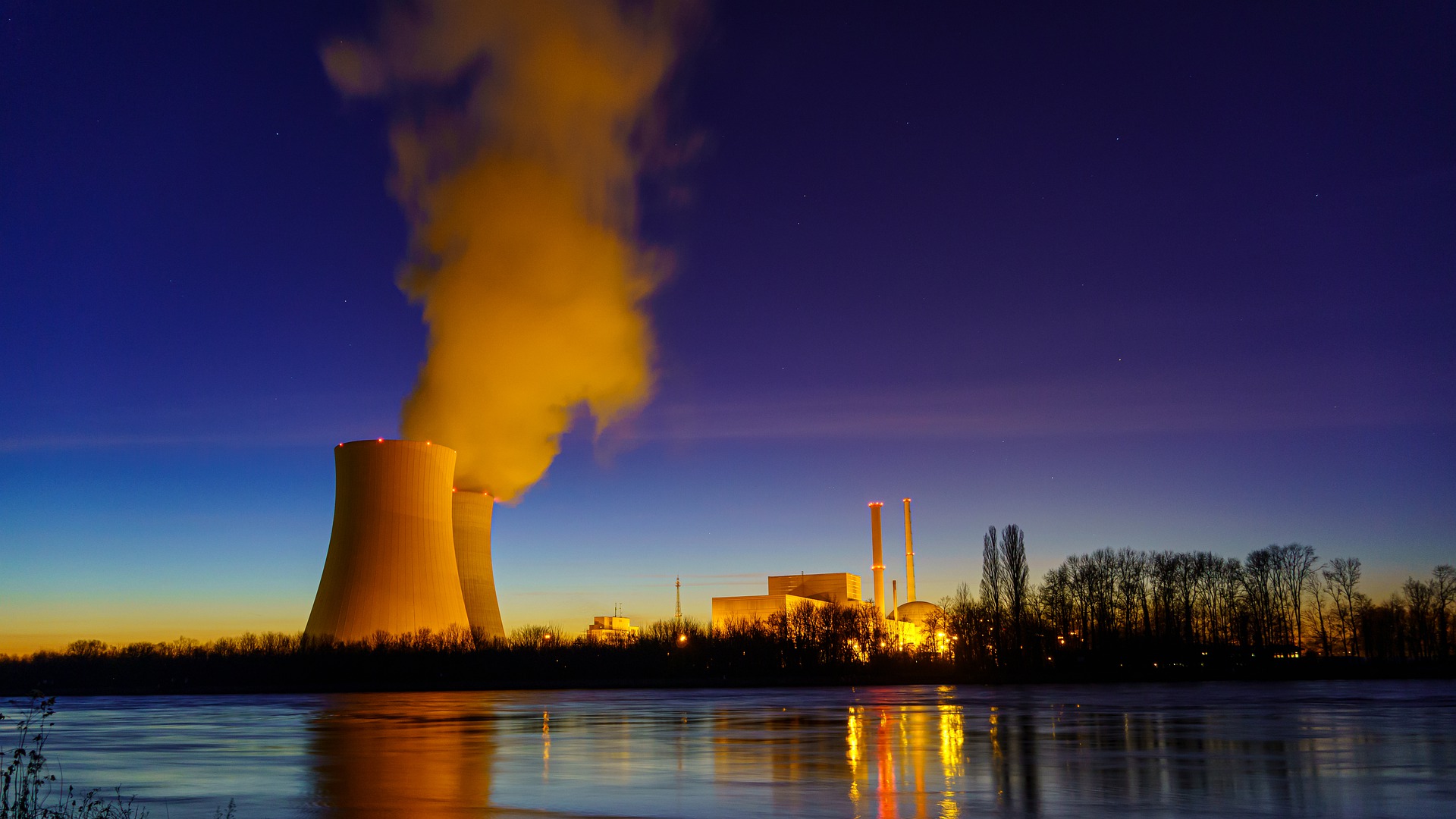The dream of a "peaceful" atom blossomed after World War II. Yet, the promise of nuclear power—cheap, abundant, clean—remains an aspiration unfulfilled. Despite the disasters of Chernobyl and Fukushima, the discussion of nuclear power has re-emerged recently as part of a post-carbon energy future. But as historian Daniel Pope discusses, nuclear power has never achieved what its boosters promised.
In 1968, Glenn Seaborg, who won the Nobel Prize in Chemistry for his discovery of plutonium, visited Richland, Washington, and the adjacent Hanford Nuclear Reservation to give a speech.
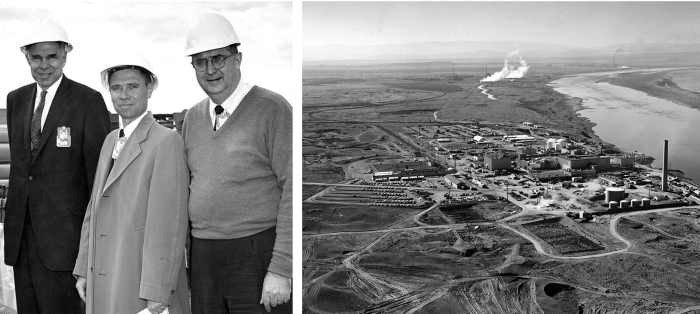
Glenn Seaborg (left) attends Operation Plumbbob as Chairman of the Atomic Energy Commission, 1968 (left). The nuclear reactors at the Hanford Site along the Columbia River as they appeared in 1960. The N Reactor is in the foreground, with the twin KE and KW Reactors in the background. The historic B Reactor, the world's first plutonium production reactor, is visible in the distance (right).
Richland, proudly dubbed the “Atomic City,” began its modern history in 1943 with the construction of Hanford’s facilities. There the Manhattan
Project had manufactured the plutonium used in the atomic bomb dropped on Nagasaki on August 9, 1945. After the war, Hanford produced the plutonium for the nation’s Cold War nuclear arsenal.
Seaborg did not visit Hanford to celebrate the bomb. As Chairman of the Atomic Energy Commission (AEC) throughout the 1960s, he was perhaps the nation’s most visible champion of the peaceful atom, power from the fission of atomic nuclei to generate electricity and perform other modern miracles.
His speech coincided with a push to develop nuclear power at Hanford. He urged listeners to dream big. Richland and Hanford could be the home of a “Nuplex,” a complex of large scale breeder reactors, producing plutonium for reuse in generating plants. They could power electricity and generate heat for science-based manufacturing industries, ranging from artificial hearts to space exploration.
Seaborg was a pioneering scientist and a shrewd administrator at the highest levels of national politics, but his speech, entitled “Large-Scale Alchemy,” invoked themes of magic and wonder. Plutonium’s “unique promise of service to mankind” would transform all aspects of society.
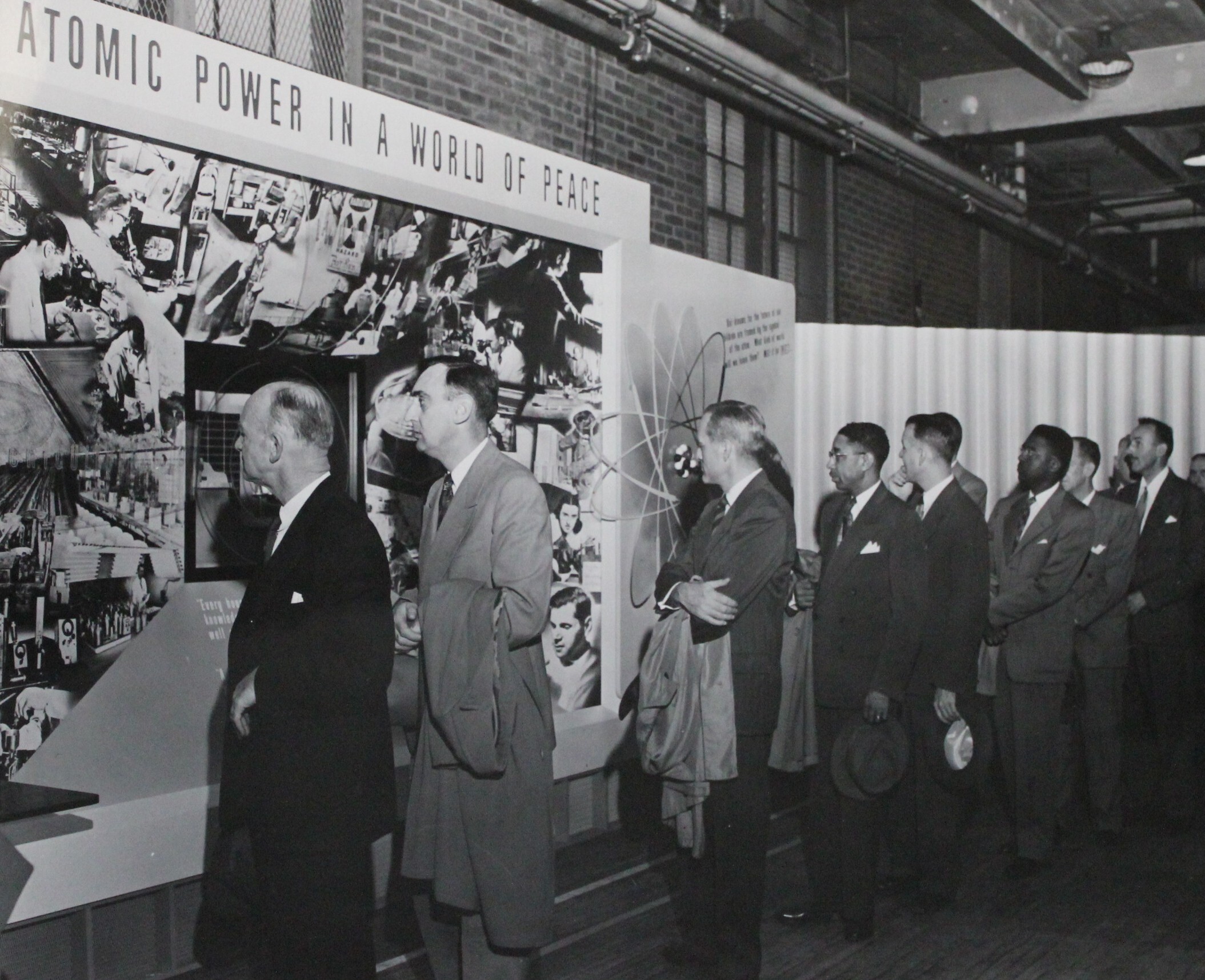
Seaborg was not alone in his visionary dreams of nuclear power. Many others also believed that the massive force of nuclear fission, used for death and destruction in war, could and must be harnessed for human betterment.
However, the quest to use the peaceful atom to build a utopian future has been marked by limited success, by failures and diminished hopes, and by an uncertain future. Today nuclear power generates about one fifth of the United States’ electric supply and roughly the same fraction of the world’s output.
In the United States, only one nuclear plant has been completed since 1996. Tennessee’s Watts Bar 2 plant went on line in 2016, 43 years after construction commenced. Only two reactors, at the Vogtle site in Georgia, are currently under construction. They’ve been beset by huge cost overruns and construction delays, most recently due to 800 cases of COVID-19 among the workforce.
The opposition to nuclear power that developed during the industry’s most rapid years of growth suggests that the ascent of nuclear power had never fully divorced itself from its military aspects.
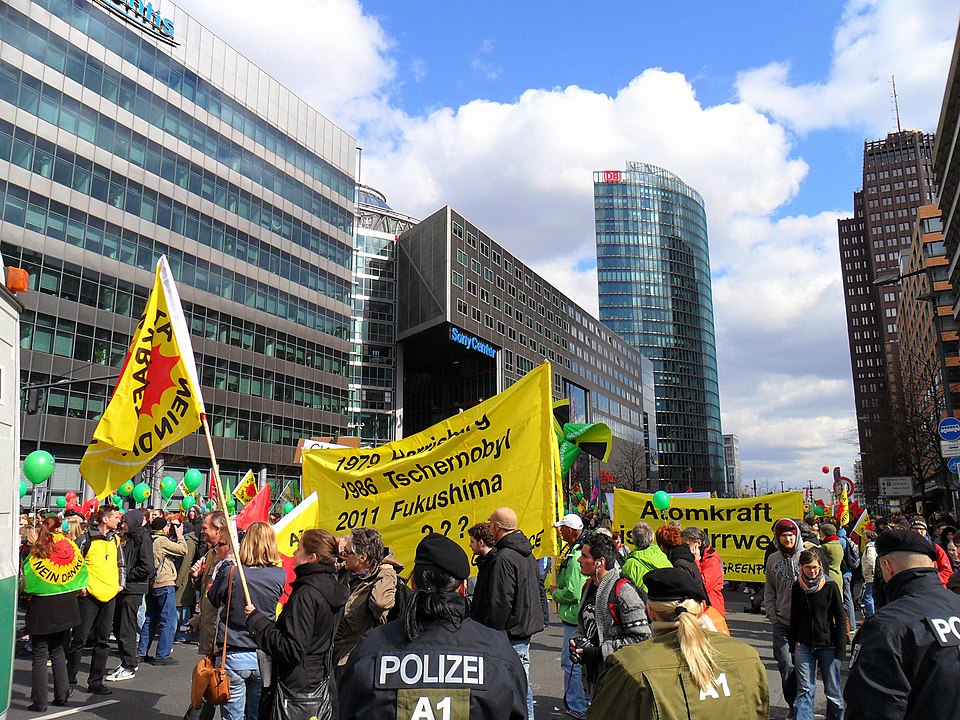
An anti-nuclear power protest in Berlin, Germany, following the 2011 Fukushima disaster.
Protests in the United States and Western Europe made it difficult for the industry to achieve its lofty goals. Dramatic nuclear accidents at Three Mile Island, Pennsylvania (1979); Chernobyl, Ukraine (1986); and Fukushima, Japan (2011) disrupted growth. In the United States the nuclear power industry never solved its own technological and economic problems.
Globally, the picture is not much rosier for nuclear power. There were 420 operating reactors in 1989. Over the next 30 years, the number grew by less than one per year to 443 in 2019. At present, construction has halted in Germany. In France, the nation most committed to nuclear power, the nuclear share of electrical output has declined. Japan’s nuclear industry has been sharply curtailed since the Fukushima Daiichi accident of 2011.
China has 11 plants under construction, but nuclear power accounts for only about 5% of that nation’s electricity. The share is even lower in other large developing nations—India, Brazil, Mexico—and so, despite the big promises made by people like Glenn Seaborg, no nation seems willing to make nuclear the cornerstone of its energy policy.
The Military Character of the Peaceful Atom
In the formulations of its early enthusiasts, nuclear power was a technocratic dream. Clean nuclear energy “too cheap to meter,” as Atomic Energy Commissioner Lewis Strauss put it, would power a future of unlimited abundance.
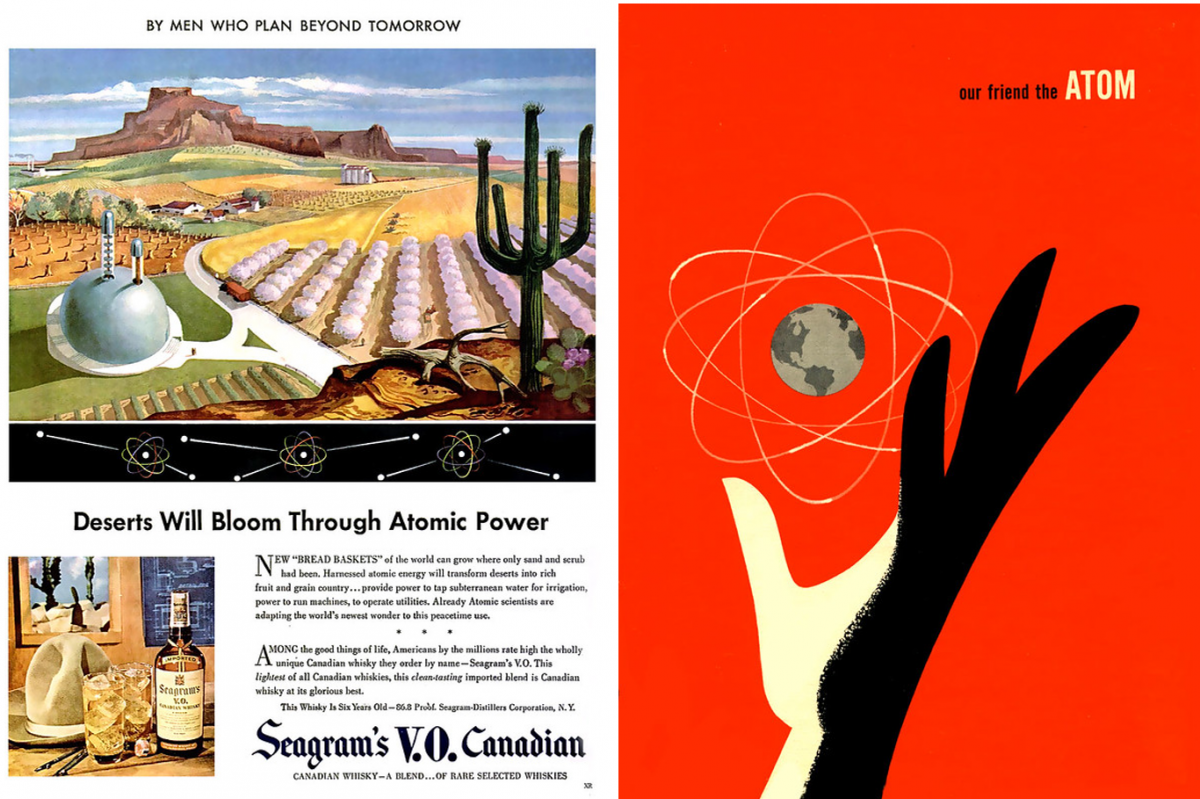
A 1947 Seagram’s Whiskey advertisement using the promise of nuclear power to market their product (left). A page from the companion book to Disney’s Tomorrow Land television show, 1957 (right).
Nuclear medicine would save lives. Nuclear powered airplanes and cargo ships would ply air and sea. The atom could desalinate the oceans for the world’s water supply. The explosive power of the nucleus could be harnessed to excavate building sites and dig canals. Nuclear power meant “Atoms for Peace,” as President Dwight Eisenhower proclaimed to the United Nations in 1953.
But visions of peace and prosperity had to contend with atomic energy’s wartime baptism over Hiroshima and Nagasaki. The Cold War in turn meant that civilian nuclear power was closely intertwined with the destructive power of nuclear weapons.
The Cold War tightened those links. Even David Lilienthal, first chairman of the AEC, reflected in 1963 that a “resolve that we must prove that the atom has a present peaceful nonmilitary use” had motivated excessive advocacy for nuclear power.
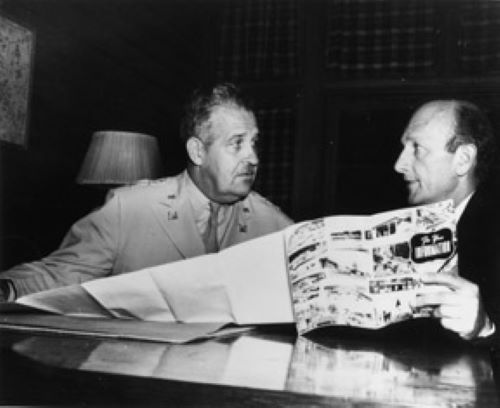
In the early 1950s, before there were any commercial plants, nuclear power’s American model took on characteristics that shaped its development for the next half century.
Recognizing the technological and managerial challenges of building and operating nuclear reactors safely, the Atomic Energy Act of 1954 outlined a mixed system of federal and private control. The AEC and Congress’s Joint Committee on Atomic Energy (JCAE) held tight regulatory and oversight controls.
The government maintained ownership of fissionable materials. But private firms would build and operate the power stations. One of the sponsors of the act called nuclear power a “socialist island” in a capitalist economy, but in reality private firms came to rely on federal subsidies while they complained about excessive regulation. The Price-Anderson Act of 1957 provided one of those subsidies by capping liability payments for reactor accidents.
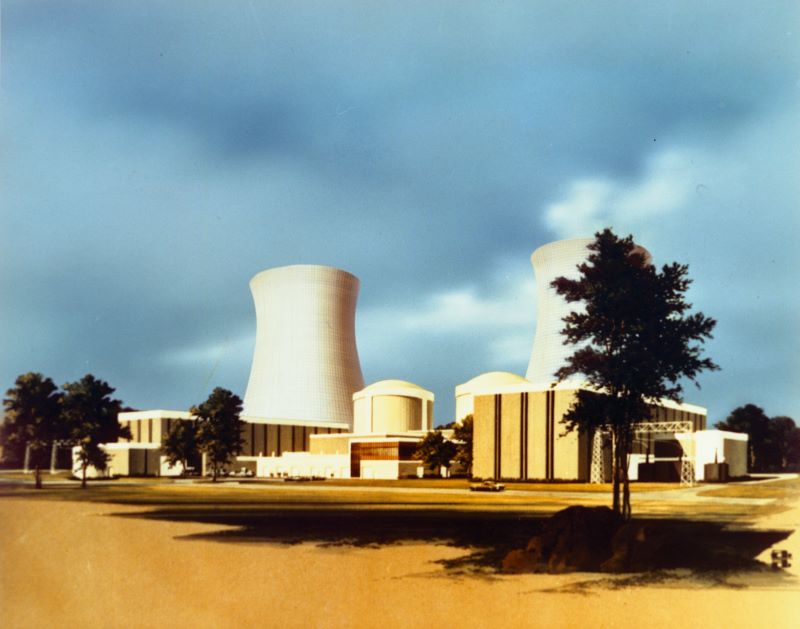
An image of a nuclear power plant in the United States with the nuclear reactors in full view, 1974.
A second crucial determinant of the course of nuclear development was the decision to make “light water” (the familiar H2O) the moderator and coolant for early reactors.
The military influence on this choice took the form of intense lobbying by Admiral Hyman Rickover, who had pressed the Navy for a nuclear submarine fleet based on this reactor design. Rickover, one of nuclear power’s most enthusiastic proponents, in effect set the pattern for American reactor design for decades.
In contrast, Canadian reactors use deuterium, or “heavy water,” containing an isotope of hydrogen with an extra neutron, as their coolant. Other reactors employ graphite to moderate the fission reaction; and some are cooled by carbon dioxide gas.
These characteristics meant oligopolistic control, a tight relationship between regulators and the nuclear industry, and competition based on differentiated reactor designs. In France, a single agency designed reactors; a single nationalized utility operated them. This enabled it to create a single basic design, something the United States never achieved.
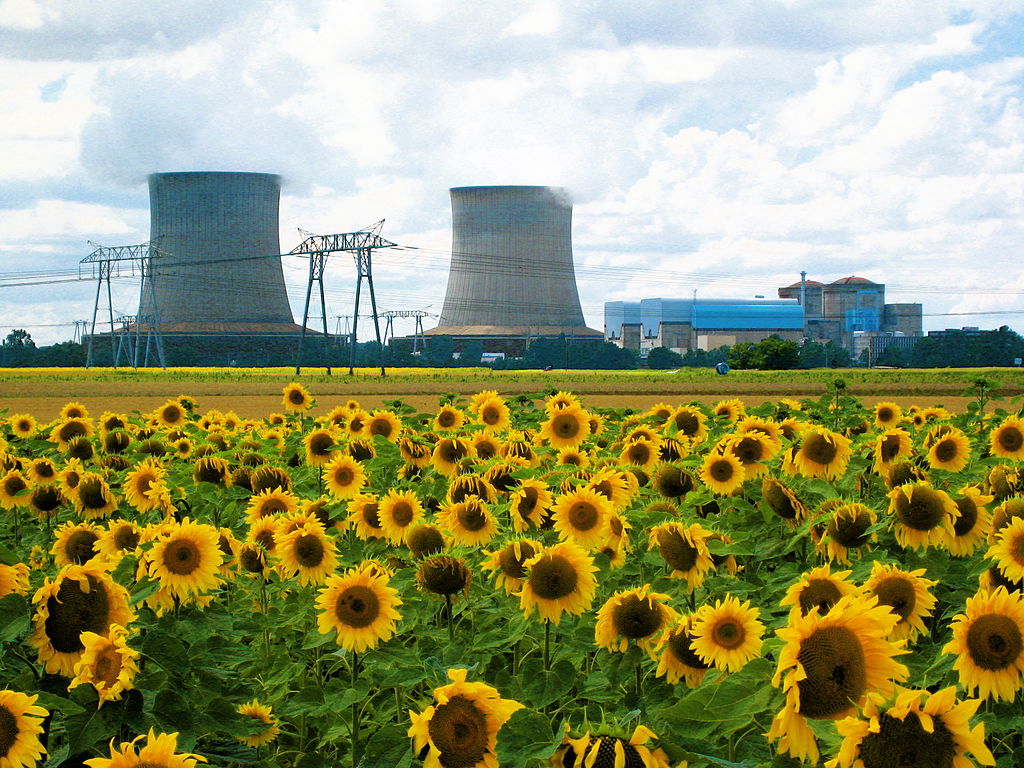
The Saint-Laurent nuclear plant is one of the many in France to have a standard reactor design.
Lack of standardization in the United States increased costs. So did the “bigger is better” mantra that the industry adopted. Economies of scale had brought about cost reduction in earlier decades, but these largely disappeared, although designers and utilities were slow to get the message. Nuclear power plant capacities grew bigger and bigger but this meant that new projects often were underway before their engineering was completed.
The shadow of the bomb demanded a public relations campaign to demonstrate the virtues of the peaceful atom. General Electric, for example, created a comic book, Dagwood Splits the Atom, to give nuclear power a comforting and familiar image. More important were subsidies and incentives to set the industry in motion.
In 1954, President Eisenhower, using a wand with a radioactive tip, sent an electrical signal from his location in Colorado to Shippingport, Pennsylvania to start construction on the nation’s first commercial nuclear power plant. The next year the AEC requested proposals for its Power Demonstration Reactor Program, but the PDRP drew only tepid business responses despite the subsidies it offered.
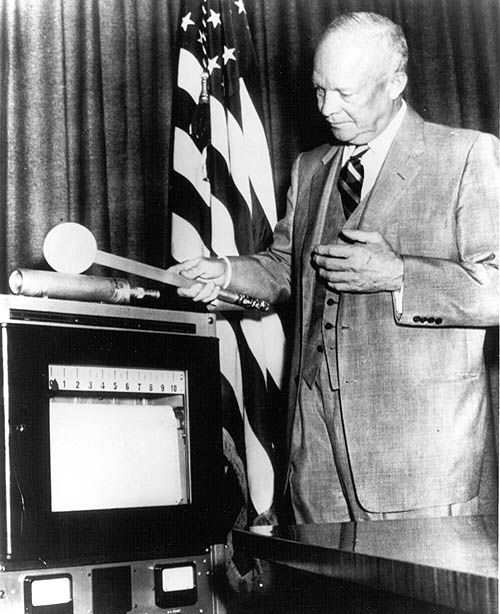
The date is significant. The Soviet Union’s Cold War military rivalry with the United States found parallels in the two nations’ nuclear power development.
The USSR was the first nation to achieve nuclear generation when a small reactor went online in 1954. Soviet nuclear growth accelerated in the 1960s and 1970s. Its champions faced opposition from bureaucratic forces committed to other energy paths and the nation’s abundant petroleum resources. The Soviets never really resolved the uneasy balance between making weapons-grade plutonium and generating power for its citizens.
By the early 1960s, however, American nuclear power had failed to show economic viability. Both Great Britain and, alarmingly, the USSR had pulled ahead of the United States in nuclear power development. If we lagged behind, “power hungry countries” might “gravitate toward the USSR,” one AEC commissioner warned.
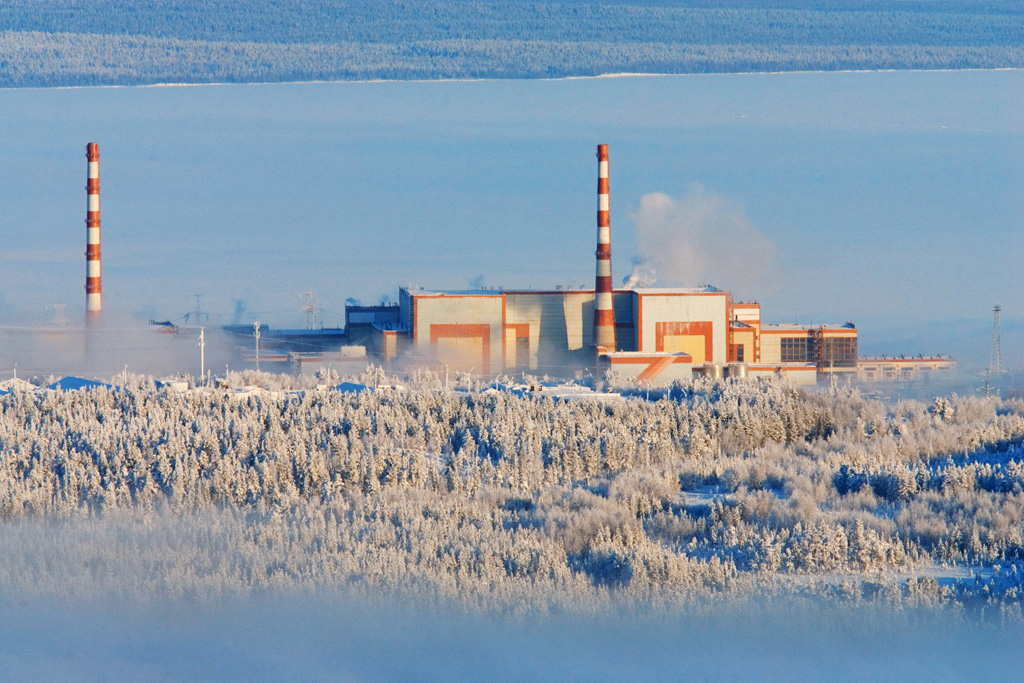
The first inklings of public opposition had emerged as well.
In 1962, New York City’s utility, Consolidated Edison, applied to build a large nuclear plant in heavily populated Ravenswood, Queens. Politicians and citizens quickly banded together to oppose it. Even David Lilienthal testified that he “would not dream of living in the borough of Queens” if the project was built.
Less than a year later, Con Ed withdrew its application. The failure pushed the nuclear industry toward remote siting, one of its safety tenets in the late 20th century.
Nuclear Power’s Moment Arrives, Almost
In the mid-1960s, General Electric and Westinghouse, the two largest reactor manufacturers, took the plunge into nuclear power. They offered to build complete plants and sell them at a fixed price, ready to generate power. These “turnkey” plants were loss leaders. The companies knew they wouldn’t make a profit on them but expected they would stimulate additional sales, a “great bandwagon market,” as one utility executive cynically put it.
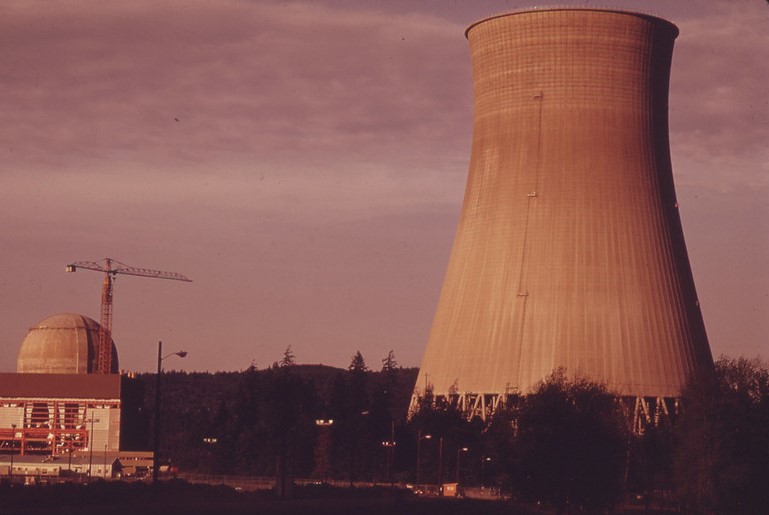
The turnkey ventures did kickstart the American nuclear industry. In 1966 and 1967 alone, utilities ordered 50 reactors. In 1969, Rep. Craig Hosmer (R-California) stated that nuclear energy had “largely solved the public dilemma it faced just a few years ago.”
Nuclear power’s share of total electrical output rose from about 1.4 percent in 1970 to 11 percent in 1980. When Richard Nixon proclaimed in 1973 that nuclear would generate half of the nation’s kilowatts by 2000, his optimism appeared justified.
Nuclear enthusiasm grew alongside anxiety about supplies of other energy sources.
Petroleum had never generated more than a minor fraction of America’s electric power, but the nation’s declining output and increased reliance on unstable overseas supplies made it more likely that nuclear would substitute for oil in residential, commercial, and industrial uses. Coal, the leading fuel for electricity generation, was provoking protests from a new environmental movement.
The American energy crisis of the early 1970s, brought on by declining U.S. petroleum output and conflict in the Middle East, also turned some toward nuclear power.

The confidence of Hosmer and others who touted nuclear power’s popularity was not universally embraced. Antiwar protesters viewed civilian nuclear power with suspicion. The enthusiasms and fears reflected in the Earth Day celebrations that began in 1970 called into question all aspects of the nuclear industry, from the hazards of uranium mining to reactor safety to pollution perils and waste disposal dilemmas.
Popular opposition coalesced with growing doubts among scientists and engineers. Groups like the Union of Concerned Scientists added their credentials to the anti-nuclear cause. And the new environmental movement stimulated interest in energy conservation and renewable resources, especially solar and wind power.
The slogan “Nuclear power? No Thanks!” appeared worldwide on countless buttons, posters and banners along with the image of a smiling sun, the beatific alternative to nuclear nightmares. Huge demonstrations, most famously at New Hampshire’s Seabrook Station in 1977 and Diablo Canyon, California in 1981, featured mass civil disobedience with arrests in the thousands.
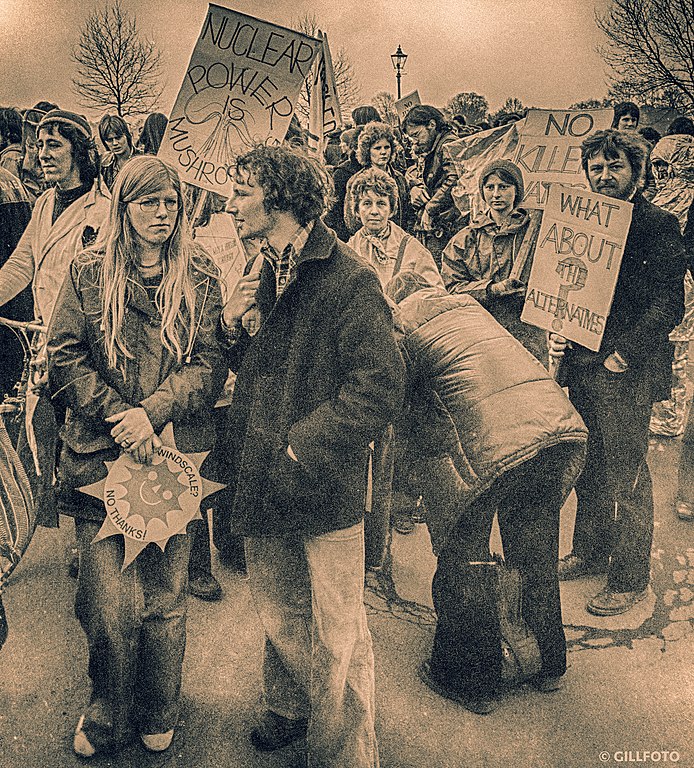
Despite the numbers and the passion in the “no-nukes” movement, polling evidence suggests it never gained majority favor in the United States. For nuclear power, the 1970s in fact were the best of times. There were 20 operating nuclear plants in 1970. That rose to 71 a decade later. Nuclear-generated electricity grew twelvefold as plant sizes grew.
But the decade was also the worst of times. Building gigantic nuclear plants was enormously difficult. Construction timetables stretched out for years. Costs soared as inflation and high interest rates took their toll. Construction firms and utilities complained that federal agencies (the AEC, dissolved in 1974, reemerged as the Nuclear Regulatory Commission, the NRC) imposed extra costs with expensive and unnecessary regulations.
Most studies have shown that regulatory costs were largely justified by safety and security concerns, but they provided a convenient explanation of the woes of nuclear projects. “There must be a better way,” one executive complained. “We cannot continue in the present purgatory.”
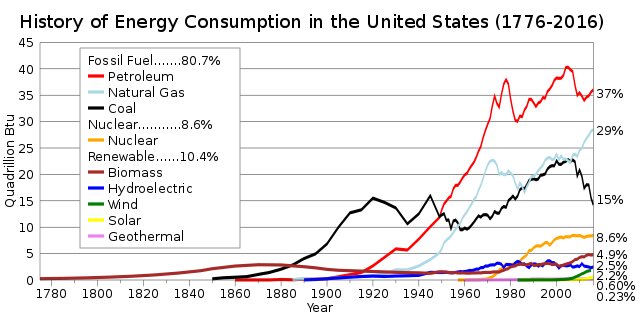
The emerging energy context of the 1970s meant that earlier predictions about the need for nuclear power often proved wildly overblown. Electricity demand had doubled in the 1950s and again in the 1960s. Planners believed the upward trajectory was inexorable. As one utility publication put it, “Electric power is like love—nobody ever gets quite enough.” But in the 1970s, the growth rate slowed from over 7% annually to about 4%.
The Pacific Northwest provides a case study of the shifting terrain of demand and production. A 1968 plan had envisioned the need for 20 large new generating plants by 1990, mostly nuclear powered. A consortium of public utilities undertook five of these but only completed one, seven years late and about eight times its initial cost estimate. In 1983, the agency defaulted on $2.25 billion in municipal bonds it had issued. The completed project has been the Northwest’s only operating nuclear plant for almost 30 years.
The End of the Beginning for Nuclear Power
By the late 1970s, nuclear power in the United States was in trouble. In 1974, federal regulators granted 23 construction permits for new projects. By 1979, the number had shrunk to two. These were the last awarded in the 20th century. In other words, the industry had stalled even before the Three Mile Island Unit 2 accident in Pennsylvania on March 28, 1979.
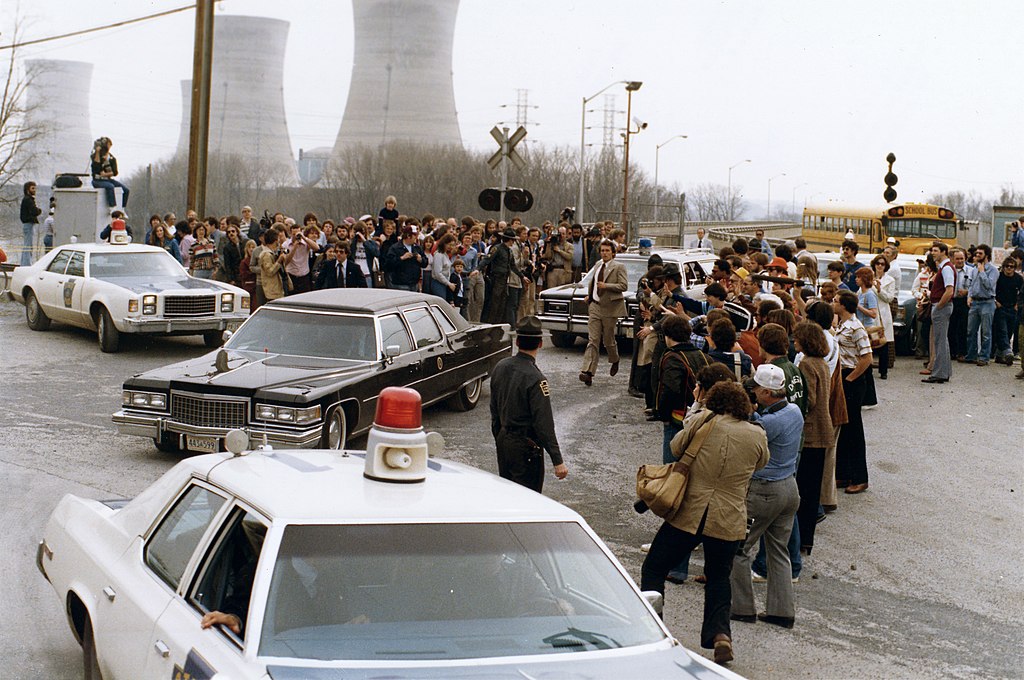
President Jimmy Carter leaving Three Mile Island on April 1, 1979.
That night, operator mistakes and technical failures converted a series of incidents outside the reactor itself into a loss-of-coolant accident. Workers found that the system of alarms and signals “wasn’t giving us any useful information.” As one operator recalled, “I would have liked to have thrown away the alarm panel.”
Three Mile Island gripped the nation for days as a hydrogen gas bubble grew, threatening to touch off a massive fire. In the end, however, the bubble dissipated. The reactor core was severely damaged, but little radiation escaped, and investigators found very little effect on public health in the area.
Yet the social and psychological impact was considerable. Coming at a time when the atom had already lost its cachet as the power source of the future, Ralph Nader could plausibly proclaim that the accident was “the beginning of the end” for nuclear power.
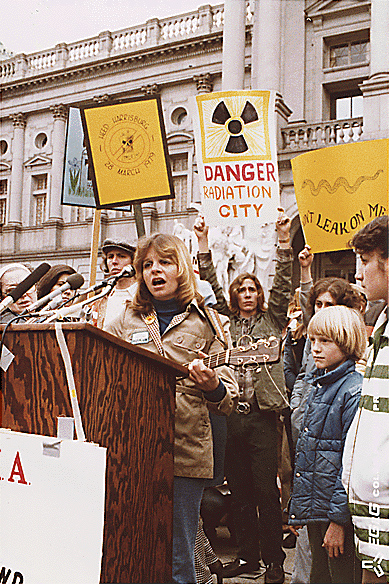
It would be more accurate to say that Three Mile Island was the end of the beginning. Nuclear output in the United States continued to grow, with the completion of existing projects. Older plants added generating capacity and most reactors in recent decades have received operating license extensions stretching their lifespan from 40 to 60 years. Yet the American nuclear power industry was moribund for decades after 1979.
While other countries’ nuclear programs faced many of the same challenges as the United States did, some forged ahead. France, a nation with few fossil fuel resources, an eagerness to develop nuclear weapons, and a technocratic enthusiasm for centralized national planning, took the lead. Today, over 70% of its electricity is nuclear generated.
Through much of its nuclear history, France has reprocessed used nuclear fuel in a “closed loop” nuclear fuel cycle. In contrast, the United States had begun building a “fast breeder” reactor (FBR) to generate both power and plutonium. However, construction was halted in 1983 when an unlikely alliance in the Senate of conservatives (fearing the technology would be too costly to be commercialized) and liberals (worried about weapons proliferation) cut off funding.
Ironically, France and other nations have largely abandoned FBRs. The notion, prevalent in the 1960s and 1970s, that uranium ore reserves were insufficient for anticipated conventional reactor growth had driven interest in FBRs but was one of the illusions that faded as nuclear development slowed in later years.
The industry’s fortunes changed overnight on April 25, 1986. A scheduled test at the Chernobyl Station’s Reactor 4 went awry, sending the plant’s chain reaction out of control.

Large (non-nuclear) explosions blew the top off the reactor housing and spewed radioactive material onto the roof. Ominous fires broke out. Faulty communications, panic and bureaucratic inertia beset the response, and in the process firefighters and others lost lives. Radiation spread through the regions of Ukraine and Belarus, near the plant, and then far beyond, mostly westward toward Europe.
The Soviet regime, despite recent moves toward glasnost and perestroika (openness and restructuring), initially suppressed news of the accident’s severity. The disaster left a devastated nuclear plant, forced the evacuation of 135,000 residents of the area, and required the creation of a zone of exclusion surrounding Chernobyl. The number of deaths in the immediate aftermath of the accident was low; longer-run casualty figures are still uncertain but are clearly much higher.
Chernobyl’s reach was global. In its aftermath, in 1987, Italian voters approved three referenda that effectively shut down the nation’s nuclear power industry. Germany, Sweden, and Austria all effectively terminated new reactor development.
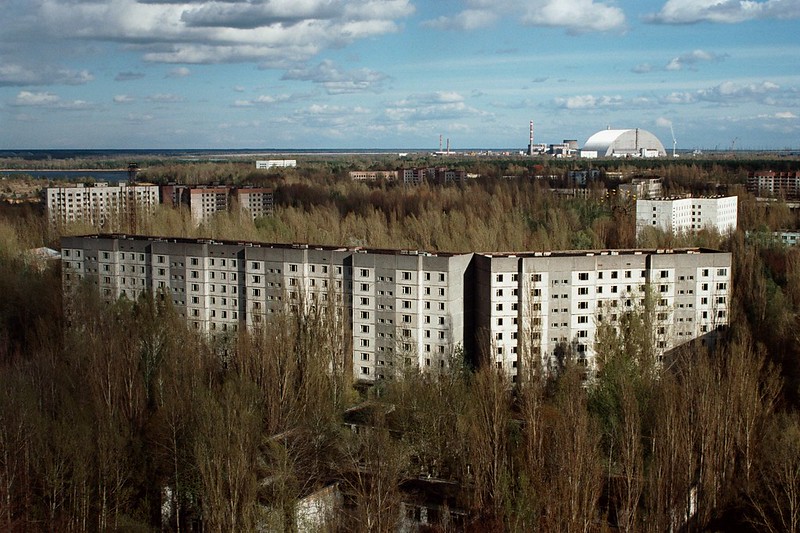
In the United States, with new plant construction already stalled, the impact was less direct. One plutonium-producing military reactor at the Hanford Nuclear Reservation, known as the N-Reactor, had been connected to a power turbine-generator system to produce electricity along with weapons material. It, like the Chernobyl reactor, was a dual-purpose installation and lacked a containment dome. The N-Reactor was quietly shut down in 1987.
The slowing of nuclear construction was in fact an international phenomenon in the last years of the 20th century.
A downward spiral emerged when public opposition led to increased regulation, driving up costs and delaying projects. In turn, economic problems and tardy projects motivated more opposition and diminished nuclear enthusiasm. Growing attention to renewables and in particular natural gas as a moderately priced and flexible fuel for electrical generation made the nuclear alternative less and less attractive.

A natural gas flare in a Texas oil field. Image by Jonathan Cutrer.
In the decades after Three Mile Island and Chernobyl, plans for a nuclear “renaissance” continued to circulate. New plant designs, according to entrepreneurs and enthusiasts, could solve earlier problems. Passive safety design, dependent on the laws of physics, would replace engineered systems reliant on the workings of complex technical devices.
Because existing power stations had to be used for baseload (almost always on) generation, new reactor designs were often projected as small and modular, to be operated when needed to meet peak demand. The 20th century’s hulking nuclear power stations could yield to more nimble ways of harnessing fission’s energy in the 21st.
Reconsidering Nuclear Power in the Age of Climate Change
For all its promises, the nuclear rebirth has generally proven chimerical. Natural gas, now available through hydraulic fracturing (a.k.a. fracking), remains much cheaper and more flexible than nuclear power. While U.S. nuclear output has increased about 20% in the past 30 years, natural gas generation has quadrupled and now accounts for more electricity than any other source.
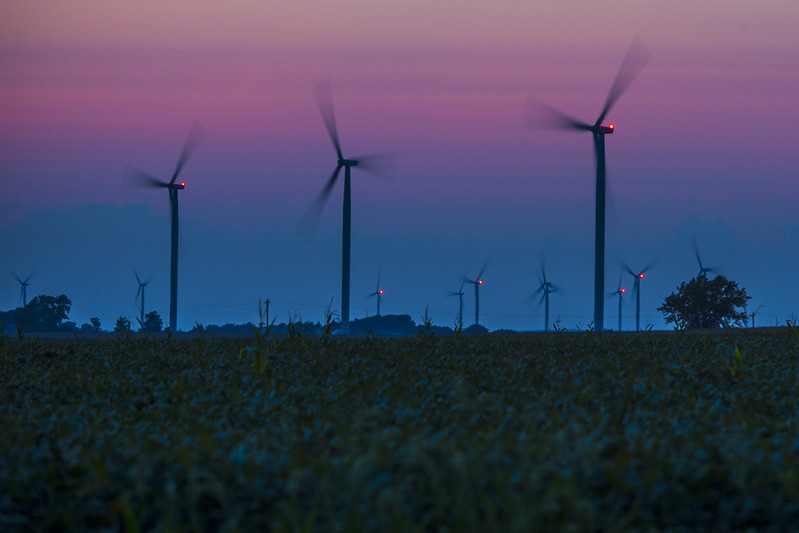
Wind turbines on the Bishop Hill wind farm in Illinois, 2017.
In the last decade, wind and solar energy have made rapid headway as well. These renewables are by now often the lowest-cost sources of electricity and generate close to a tenth of the nation’s supply, almost four times their share a decade ago. Of course, they also respond to the urgent need to stave off climate change.
Yet if climate change has steered electrical energy toward renewables, it has also turned out to be the most persuasive argument to expand nuclear power in this century. Nuclear advocates often point out that the atom provides well over half the nation’s supply of non-fossil fuel electricity, about twice as much as wind and solar combined.
Some environmentalists, notably the Union of Concerned Scientists, for decades among the staunchest opponents of nuclear projects, have been persuaded to reconsider their position. In 2018, the UCS cautiously endorsed continued operation of existing plants although it does not see new nuclear projects as desirable. For the first time since 1972, the Democratic Party’s 2020 platform speaks favorably of nuclear energy.
On March 11, 2011, a massive earthquake, the fourth-largest recorded in modern times, erupted off Japan’s east coast. It triggered a tsunami 14 meters (about 46 feet) high. The tsunami crashed into the Fukushima Daiichi nuclear complex on the shoreline.
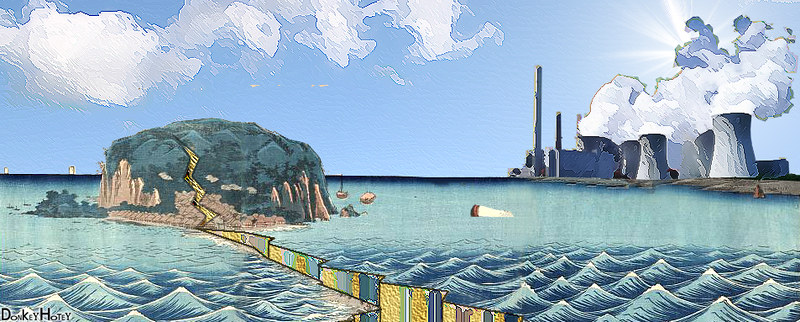
The six reactors on the site shut down in response to the earthquake. Diesel powered generators were supposed to take over from the reactors to keep the reactor’s emergency cooling system operating. The diesels failed, and three of the reactors suffered core meltdowns.
Over the next several days, a succession of hydrogen explosions, fires, and radiation discharges continued. Authorities evacuated about 160,000 people from a 20 kilometer radius around the plant. Efforts to control the effects and contain the dangers continued for months if not years. The return of evacuees has been incomplete. The panicky evacuations themselves caused most of Fukushima’s death toll, about 1600.
The accident occurred at a moment when advocates of a nuclear renaissance were seeing hopeful signs. The two new plants at the Vogtle site in Georgia had begun construction in 2009 with completion scheduled for 2016 and 2017. In South Carolina, plans for two new reactors at the Virgil C. Summer site were underway. The NRC approved construction in 2012.
By 2017, however, construction of the Summer projects was abandoned, soon after Westinghouse Electric, the supplier of a newly designed reactor system, filed for bankruptcy. The plants were less than 40% complete and total costs were estimated at $9 billion. The Vogtle projects are now slated for completion in 2021 and 2022, but their actual fate remains uncertain.
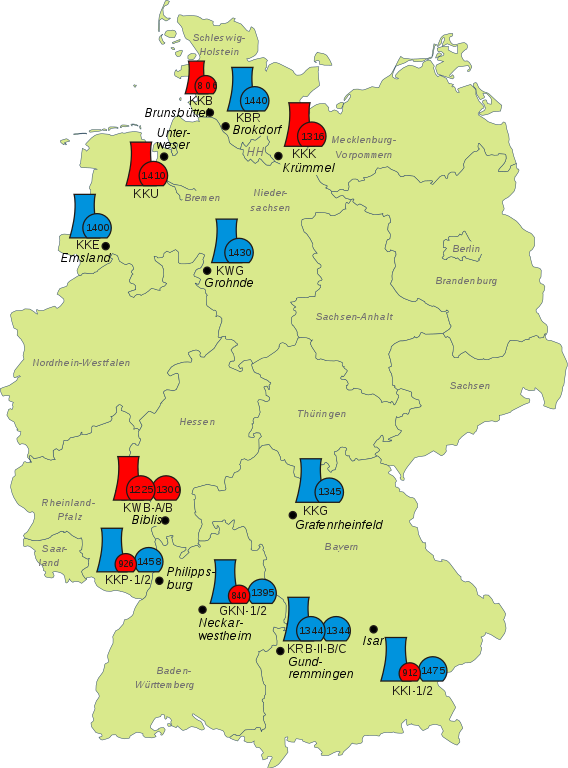
Fukushima’s alarms were felt worldwide. Germany accelerated plans to phase out nuclear. Japan shut down its extensive nuclear fleet and has only gradually restarted plants. Even France announced plans to close 17 of its 58 plants, though it soon retreated from this change. In the United States, the industry and the NRC took modest steps to avoid a Fukushima-like disaster.
Still, companies are moving forward. One of them, NuScale, plans to build 12 small modular reactors for a consortium of Utah public utilities. But even these more flexible projects move slowly and rely on government support. The U.S. Department of Energy awarded $16.6 million in 2015 to support the complicated licensing application procedure, which is still not complete.
Moreover, the reactors will be placed at the federally run Idaho National Laboratory, a center of both civilian and military energy research. Birthed in the afterglow of the bomb, American nuclear energy is not fully weaned from its military connections.
Nuclear energy’s perils, ranging from “black swan” unforeseen accidents to terrorist attacks and waste disposal dangers, remain not fully resolved. Over 60 years after the first commercial plant began operation, the economic viability of nuclear energy remains questionable.

The Generation IV roadmap produced by Argonne National Laboratory showing the evolution of nuclear power and where its future lies.
Nevertheless, a growing consensus that nuclear is needed at least during a transition to a carbon-free future has emerged. Investors, including Bill Gates, are eager to bring the long-heralded nuclear renaissance a reality. Haltingly, nuclear projects move forward. Predictions are hazardous, but there is reason to believe that nuclear power will continue to play a supporting role in the American energy system.
Boyer, Paul S. By the Bomb's Early Light: American Thought and Culture at the Dawn of the Atomic Age. Chapel Hill, NC: University of North Carolina Press, 1994.
Caldicott, Helen. Nuclear Power is not the Answer. New York: New Press, 2006.
Campbell, John L. Collapse of an Industry: Nuclear Power and the Contradictions of U.S. Policy. Ithaca, NY: Cornell University Press, 1988.
Epstein, Barbara. Political Protest and Cultural Revolution. Berkeley and Los Angeles: University of California Press, 1991.
Hecht, Gabrielle. The Radiance of France: Nuclear Power and National Identity after World War II. Cambridge, MA: The MIT Press, 1998.
Jasper, James M. Nuclear Politics: Energy and the State in the United States, Sweden, and France. Princeton, NJ: Princeton University Press, 1990.
Pope, Daniel. Nuclear Implosions: The Rise and Fall of the Washington Public Power Supply System. New York: Cambridge University Press, 2008.
Rhodes, Richard. Energy: A Human History. New York: Simon & Schuster, 2018.
Walker, J. Samuel and Thomas R. Wellock. A Short History of Nuclear Regulation. Washington, D.C.: U.S. Nuclear Regulatory Commission, 2010.
Weart, Spencer R. The Rise of Nuclear Fear. Cambridge, MA: Harvard University Press, 2012

